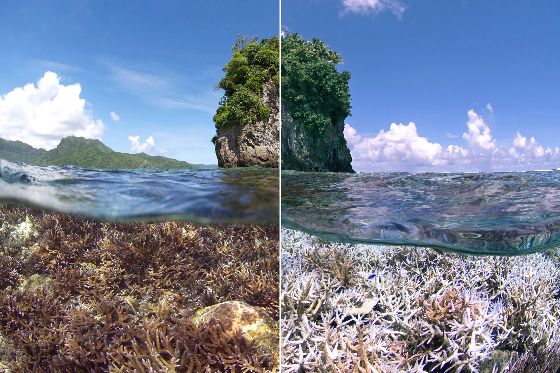
By Steven Mew, the Australian Science Media Centre
The latest State of the Climate Report from the World Meteorological Organization (WMO) on the South-West Pacific shows unprecedented ocean warming, land and ocean temperature records broken, and a glacier in tropical New Guinea that may be gone by 2026.
According to the report, marine heatwaves in the region impacted nearly 40 million km2, an area five times the size of Australia, while the Philippines experienced 6 tropical cyclones in just 3 weeks.
A key indicator for the State of the Climate report is temperature, and 2024 was the warmest year on record for the region, reaching half a degree warmer than the average for 1991 to 2020, while many areas, including Australia and the Philippines, reported record-breaking temperatures.
In Indonesia, New Guinea’s tropical glacier has lost between 30% and 50% of its ice area since the last report in 2020.
“If this rate of loss continues, this glacier could be gone by 2026 or shortly thereafter,” co-lead author of the report, Dr Thea Turkington from the WMO, told an AusSMC briefing.
Ocean temperatures are another focus of the report, as the South-West Pacific is a largely oceanic region.
According to Dr Turkington, “around 90% of the extra heat in the atmosphere and 25% of CO2 emissions are absorbed by the ocean”.
The report indicates that 2024 saw record-breaking sea-surface temperatures, near record-breaking ocean heat content, and the largest area affected by marine heatwaves since 1993.
Dr Blair Trewin, also from the WMO and co-author on the report, told the AusSMC that severe marine heatwave conditions in areas near and south of the equator have “significant implications for marine ecosystems, and in particular, corals, which are very sensitive to excess heat”.
Rainfall was more of a mixed bag in 2024, with the northern, central, and eastern parts of Australia experiencing rainfall in the top 20% of wettest years, while the southern and north-western parts of Australia experienced conditions in the top 20% of driest years.
This odd combination of hottest and wettest extremes all in one year comes down to how rising temperatures impact the water cycle, according to Mr Ben Churchill, Director of the Regional Office for Asia and the South-West Pacific at the WMO.
“For every one degree of warming, the atmosphere can hold an extra 7% of moisture”, he said, which means higher rainfall in some areas but also lower rainfall in others.
The report highlights the unprecedented nature of the events experienced in 2024 however, unprecedented doesn’t mean unexpected.
Time and time again, the Bureau of Meteorology, the CSIRO, the WMO, and the IPCC release reports indicating that we will see increased temperatures on land and sea, weather extremes and extreme events, sea level rise, melting glaciers, and dying corals if we do not take action to limit climate change.
Mr Churchill told the AusSMC that the WMO’s State of the Climate for the South-West Pacific is another alarming report, and a “wake-up call for stronger climate action”.
He said that he would like the report to be spread far and wide, and understood by policymakers and sectors that are vulnerable to climate, as well as the general community.
“… so that they understand what's at stake, what's happening in their part of the world, and perhaps they could use it to encourage their governments to take stronger climate action.”
This article originally appeared in Science Deadline, a weekly newsletter from the AusSMC. You are free to republish this story, in full, with appropriate credit.
Contact: Steven Mew
Phone: +61 8 7120 8666
Email: info@smc.org.au